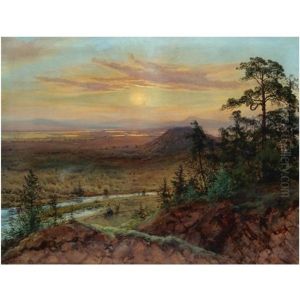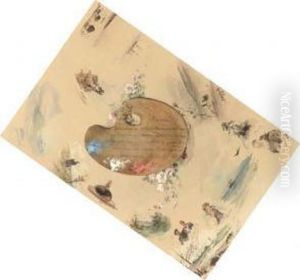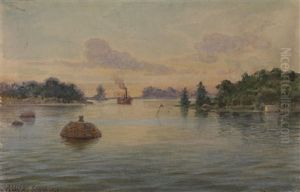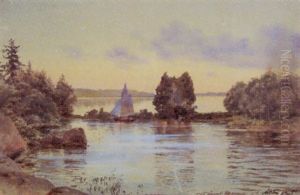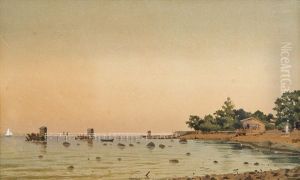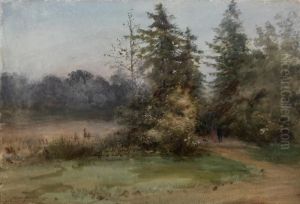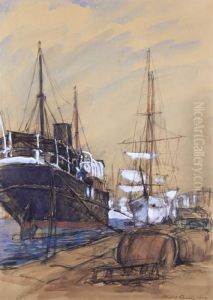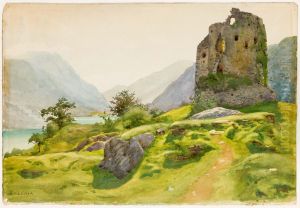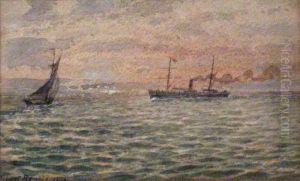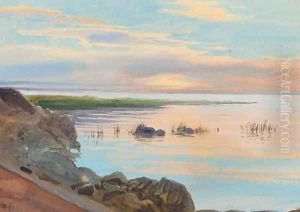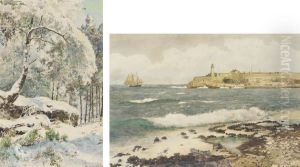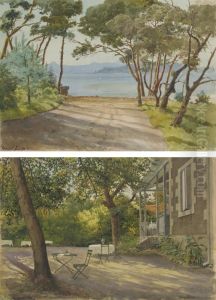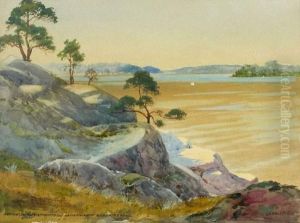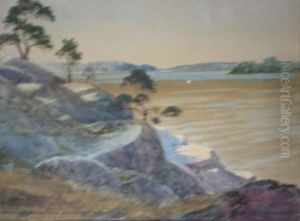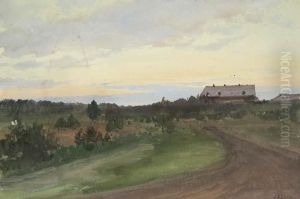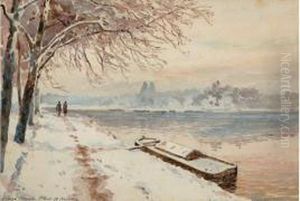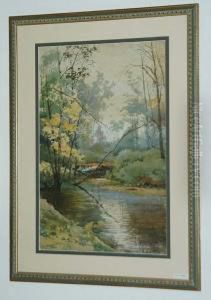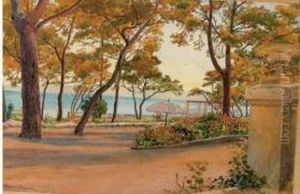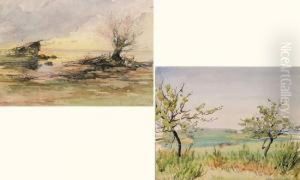Albert Nikolaevich Benois Paintings
Albert Nikolaevich Benois was a Russian artist and architect who played a significant role in the art world of his time, particularly within the context of Russian culture. Born on March 14, 1852, into the prominent Benois family, which included several generations of artists, architects, and designers, Albert was destined to leave his own mark in the realm of visual arts.
Albert's career was multifaceted; he initially trained as an architect under his father, Nicholas Benois, who was a noted architect of his time. Despite this training, Albert Benois is more widely recognized for his accomplishments as a watercolor painter. His artistic career was largely focused on landscapes and architectural scenes. His works often depicted the beauty of the Russian and Italian countryside, showcasing his keen eye for light, shade, and atmospheric effects. Benois was particularly adept at capturing the mood of a scene, a skill that made his paintings highly sought after during his lifetime.
He became a member of the Society of Russian Watercolorists and later contributed to the World of Art (Mir Iskusstva), an influential art magazine and movement that sought to promote the aesthetic ideals of Art Nouveau in Russia. The World of Art movement played a crucial role in introducing Russian audiences to contemporary European art trends of the late 19th and early 20th centuries. Benois' involvement with this group placed him at the center of a cultural renaissance that would have a lasting impact on Russian art.
Albert Benois’ legacy is also tied to his family, with several members achieving prominence in the arts. His brother, Alexandre Benois, became a celebrated artist, critic, and a founding member of the World of Art movement, while his nephew, Alexandre Nikolaevich Benois, was a renowned stage designer and painter.
Albert Nikolaevich Benois passed away on February 16, 1936. His works continue to be appreciated for their historical value and artistic beauty, and they can be found in various museum collections, including the Russian Museum in St. Petersburg. His contributions to Russian art, particularly in the fields of watercolor painting and architectural depiction, ensure that his name remains respected within the annals of art history.
